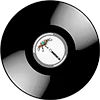Showbiz News | Page: 5
Atmospheric Breaks — airy rhythms and ambient melodies
 Atmospheric Breaks is a subgenre of electronic music that combines breakbeat rhythms with spacious, ambient, and melodic textures. It creates a feeling of flight, lightness, and cinematic depth, where every beat is surrounded by a soft atmosphere.
History and Origins
The genre emerged in the mid-1990s at the intersection of breakbeat, ambient, downtempo, and drum’n’bass.
Its roots are linked to labels like Good Looking Records and LTJ Bukem, who championed a soft, “airy” version of breaks and jungle.
Many producers sought to move away from aggressive rhythms toward more emotional and contemplative soundscapes.
Sound Characteristics
Tempo: 120–140 BPM, sometimes leaning closer to downtempo.
Rhythm: based on breakbeat (broken rhythms) with smooth dyn...
Atmospheric Breaks is a subgenre of electronic music that combines breakbeat rhythms with spacious, ambient, and melodic textures. It creates a feeling of flight, lightness, and cinematic depth, where every beat is surrounded by a soft atmosphere.
History and Origins
The genre emerged in the mid-1990s at the intersection of breakbeat, ambient, downtempo, and drum’n’bass.
Its roots are linked to labels like Good Looking Records and LTJ Bukem, who championed a soft, “airy” version of breaks and jungle.
Many producers sought to move away from aggressive rhythms toward more emotional and contemplative soundscapes.
Sound Characteristics
Tempo: 120–140 BPM, sometimes leaning closer to downtempo.
Rhythm: based on breakbeat (broken rhythms) with smooth dyn...
Chillout — the music of relaxation: history, subgenres & best artists
 Chillout (or Chill-out) is a style of electronic music created for relaxation and rest. It blends elements of downtempo, ambient, lounge, soul, and jazz, creating an atmosphere of tranquility and inner peace.
History and Origins
Early 1990s: the term chillout first appeared in British clubs, where “chillout rooms” were created — relaxation zones after raves, where DJs played calm, soothing tracks.
The first compilations (Café del Mar, Buddha Bar) set the tone for the genre: smooth rhythms, soft beats, and airy atmospheres.
The genre quickly became popular in Ibiza and across Europe as background music for bars, lounges, and after-parties.
Sound Characteristics
Tempo: 70–110 BPM — calm and non-aggressive.
Sound: soft synthesizers, acoustic in...
Chillout (or Chill-out) is a style of electronic music created for relaxation and rest. It blends elements of downtempo, ambient, lounge, soul, and jazz, creating an atmosphere of tranquility and inner peace.
History and Origins
Early 1990s: the term chillout first appeared in British clubs, where “chillout rooms” were created — relaxation zones after raves, where DJs played calm, soothing tracks.
The first compilations (Café del Mar, Buddha Bar) set the tone for the genre: smooth rhythms, soft beats, and airy atmospheres.
The genre quickly became popular in Ibiza and across Europe as background music for bars, lounges, and after-parties.
Sound Characteristics
Tempo: 70–110 BPM — calm and non-aggressive.
Sound: soft synthesizers, acoustic in...
International Music Day — a celebration that resonates in every heart
 Every October 1, the world fills with a special melody. It’s not just another date on the calendar — it’s the International Music Day, a celebration for everyone who can’t imagine life without sound, rhythm, emotion, and inspiration.
Music is a universal language that needs no words. It unites continents, heals the soul, inspires courage, and helps us experience every emotion more deeply.
History and Mission of the Celebration
This remarkable day was established in 1975 by UNESCO and the International Music Council (IMC). It was initiated by the legendary violinist and conductor Yehudi Menuhin.
The idea was simple yet brilliant: through music, promote peace and mutual understanding among nations and encourage cultural exchange through sound. Since then, October 1 ha...
Every October 1, the world fills with a special melody. It’s not just another date on the calendar — it’s the International Music Day, a celebration for everyone who can’t imagine life without sound, rhythm, emotion, and inspiration.
Music is a universal language that needs no words. It unites continents, heals the soul, inspires courage, and helps us experience every emotion more deeply.
History and Mission of the Celebration
This remarkable day was established in 1975 by UNESCO and the International Music Council (IMC). It was initiated by the legendary violinist and conductor Yehudi Menuhin.
The idea was simple yet brilliant: through music, promote peace and mutual understanding among nations and encourage cultural exchange through sound. Since then, October 1 ha...
Bassline — the groovy rhythm of the British underground
 Bassline (also known as Bassline House) is a genre of electronic dance music that emerged in the UK in the early 2000s. It combines an energetic house beat with heavy basslines and elements of garage, grime, and speed garage, creating a powerful, groovy sound made for the club floor.
History and Origins
Birthplace: Northern England, especially the cities of Sheffield and Birmingham.
The first tracks appeared around 2002–2003, when DJs started speeding up UK Garage and boosting the low-end frequencies.
In clubs like Niche (Sheffield), a distinct sound took shape — 2-step rhythm + sub-bass + R&B-inspired vocals.
By 2007, Bassline had become a full-fledged genre, with tracks like T2 – “Heartbroken”, H "What’s It Gonna Be" and DJ Q – &ldquo...
Bassline (also known as Bassline House) is a genre of electronic dance music that emerged in the UK in the early 2000s. It combines an energetic house beat with heavy basslines and elements of garage, grime, and speed garage, creating a powerful, groovy sound made for the club floor.
History and Origins
Birthplace: Northern England, especially the cities of Sheffield and Birmingham.
The first tracks appeared around 2002–2003, when DJs started speeding up UK Garage and boosting the low-end frequencies.
In clubs like Niche (Sheffield), a distinct sound took shape — 2-step rhythm + sub-bass + R&B-inspired vocals.
By 2007, Bassline had become a full-fledged genre, with tracks like T2 – “Heartbroken”, H "What’s It Gonna Be" and DJ Q – &ldquo...
Dark Psy Trance: History, Sound Characteristics, Top Tracks & 150-180 BPM
 Dark Psy Trance is a subgenre of psychedelic trance known for its extreme energy, chaotic sounds, and hypnotic atmosphere. It emerged in the late 1990s – early 2000s as a response to the more “melodic” full-on style and became the embodiment of the darker side of psy culture.
History and Origins
Roots of the genre trace back to the Goa trance of the 1990s, where producers began experimenting with darker, more industrial, and psychedelic sounds.
The first waves of Dark Psy appeared in the scenes of Brazil, Russia, Portugal, and India.
Labels such as Parvati Records, Trishula Records, and Noize Conspiracy became pioneers of the genre.
Sound Characteristics
Tempo: 150–180 BPM — very fast, with a hypnotic rhythm.
Atmosphere: dark, mystical, sometimes c...
Dark Psy Trance is a subgenre of psychedelic trance known for its extreme energy, chaotic sounds, and hypnotic atmosphere. It emerged in the late 1990s – early 2000s as a response to the more “melodic” full-on style and became the embodiment of the darker side of psy culture.
History and Origins
Roots of the genre trace back to the Goa trance of the 1990s, where producers began experimenting with darker, more industrial, and psychedelic sounds.
The first waves of Dark Psy appeared in the scenes of Brazil, Russia, Portugal, and India.
Labels such as Parvati Records, Trishula Records, and Noize Conspiracy became pioneers of the genre.
Sound Characteristics
Tempo: 150–180 BPM — very fast, with a hypnotic rhythm.
Atmosphere: dark, mystical, sometimes c...
AI for Musicians: Tools, Copyright, and Tips
 Artificial Intelligence (AI) has permanently transformed the creative industry, and music is no exception. Today, AI is no longer just a futuristic concept—it’s a real tool that helps both beginners and professional producers write music, handle mastering, and even promote their tracks.
This guide is your complete introduction to the world of AI in music: how it works, which tools to use, and most importantly, how to protect your work in the new legal landscape.
1. Use Cases: How AI Supports Musicians
AI can act as an invisible assistant—or even a true co-creator—at every stage of making music.
Idea Generation and Composition (AI Composer)
Create original melodies, harmonies, and rhythms from text prompts (Text-to-Music) or specific parameters.
Automatically genera...
Artificial Intelligence (AI) has permanently transformed the creative industry, and music is no exception. Today, AI is no longer just a futuristic concept—it’s a real tool that helps both beginners and professional producers write music, handle mastering, and even promote their tracks.
This guide is your complete introduction to the world of AI in music: how it works, which tools to use, and most importantly, how to protect your work in the new legal landscape.
1. Use Cases: How AI Supports Musicians
AI can act as an invisible assistant—or even a true co-creator—at every stage of making music.
Idea Generation and Composition (AI Composer)
Create original melodies, harmonies, and rhythms from text prompts (Text-to-Music) or specific parameters.
Automatically genera...
Bouncy Techno — the joyful rhythm of 90s rave culture
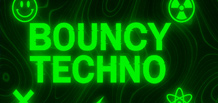 Bouncy Techno is a subgenre of techno and hardcore music that emerged in the mid-1990s. It was characterized by a fast tempo, energetic “bouncy” rhythms, and a positive atmosphere. This style became an integral part of the British and Dutch rave scenes, where music was not just sound — but a real celebration.
History and Origins
Early 1990s: During the heyday of raves and hardcore techno, DJs began adding fun, “bouncy” rhythms to their sets.
The term Bouncy Techno was first used by British producer Scott Brown and the label Evolution Records.
In the Netherlands, the genre overlapped with Happy Hardcore, while in the UK it became a response to the darker sound of gabber and hard trance.
Sound Characteristics
Tempo: 160–180 BPM — faster tha...
Bouncy Techno is a subgenre of techno and hardcore music that emerged in the mid-1990s. It was characterized by a fast tempo, energetic “bouncy” rhythms, and a positive atmosphere. This style became an integral part of the British and Dutch rave scenes, where music was not just sound — but a real celebration.
History and Origins
Early 1990s: During the heyday of raves and hardcore techno, DJs began adding fun, “bouncy” rhythms to their sets.
The term Bouncy Techno was first used by British producer Scott Brown and the label Evolution Records.
In the Netherlands, the genre overlapped with Happy Hardcore, while in the UK it became a response to the darker sound of gabber and hard trance.
Sound Characteristics
Tempo: 160–180 BPM — faster tha...
Electroclash — a bold fusion of retro and electronics
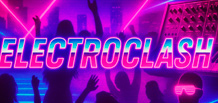 Electroclash is a genre that blends the sound of 1980s synth-pop, techno, new wave, and electro with provocative aesthetics and irony. It emerged as an underground movement in the late 1990s and became the musical symbol of trendy clubs in New York and Berlin in the early 2000s.
History and Origins
Late 1990s: DJs and producers began to revive interest in retro sounds of synthesizers and drum machines.
The aesthetics of the genre combined the spirit of new wave, DIY punk, and glamour.
Electroclash was a reaction to the sterile sound of late 90s EDM and pop — it was dirty, sexy, fashionable, and ironic.
New York (label International Deejay Gigolos) and Berlin played a key role, where the style became part of the club subculture.
Sound Characteristics
Synthesizers and drum ...
Electroclash is a genre that blends the sound of 1980s synth-pop, techno, new wave, and electro with provocative aesthetics and irony. It emerged as an underground movement in the late 1990s and became the musical symbol of trendy clubs in New York and Berlin in the early 2000s.
History and Origins
Late 1990s: DJs and producers began to revive interest in retro sounds of synthesizers and drum machines.
The aesthetics of the genre combined the spirit of new wave, DIY punk, and glamour.
Electroclash was a reaction to the sterile sound of late 90s EDM and pop — it was dirty, sexy, fashionable, and ironic.
New York (label International Deejay Gigolos) and Berlin played a key role, where the style became part of the club subculture.
Sound Characteristics
Synthesizers and drum ...
Art Rock — Intellectual Rock as Art
 Art Rock is a subgenre of rock music that focuses not only on rhythm and melody but also on artistic vision, conceptual ideas, and experimentation. It is a style that merges rock with elements of classical music, jazz, theatre, and avant-garde, turning music into a true form of art.
History and Origins
The genre emerged in the 1960s in the UK and the USA, driven by musicians’ desire to make rock music more intellectual and expressive.
The pioneers are considered to be The Beatles (album Sgt. Pepper’s Lonely Hearts Club Band, 1967) and The Beach Boys (Pet Sounds, 1966), where orchestration, conceptual storytelling, and studio experimentation first appeared.
In the 1970s, Art Rock became an independent genre thanks to bands such as Pink Floyd, Genesis, Yes, King Crimson, an...
Art Rock is a subgenre of rock music that focuses not only on rhythm and melody but also on artistic vision, conceptual ideas, and experimentation. It is a style that merges rock with elements of classical music, jazz, theatre, and avant-garde, turning music into a true form of art.
History and Origins
The genre emerged in the 1960s in the UK and the USA, driven by musicians’ desire to make rock music more intellectual and expressive.
The pioneers are considered to be The Beatles (album Sgt. Pepper’s Lonely Hearts Club Band, 1967) and The Beach Boys (Pet Sounds, 1966), where orchestration, conceptual storytelling, and studio experimentation first appeared.
In the 1970s, Art Rock became an independent genre thanks to bands such as Pink Floyd, Genesis, Yes, King Crimson, an...
Reggaeton — the rhythm of Latin America that conquered the world
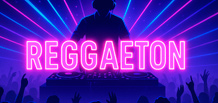 Reggaeton — is a Latin American music genre that blends reggae, hip-hop, and Caribbean rhythms. Today, it is one of the most popular styles in the world, heard on radio stations, festivals, and charts on both sides of the Atlantic.
History and Origins
1980s: the roots of the genre go back to Panama, where immigrants from Jamaica began performing reggae in Spanish.
1990s: in Puerto Rico, the style evolved, incorporating hip-hop and dancehall. The music became more energetic, and the lyrics — more street-oriented.
Initially, reggaeton was considered underground and was played on cassette tapes and at illegal parties.
Sound Characteristics
Dem Bow rhythm — the foundation of the genre, named after the track Shabba Ranks – Dem Bow. This is a distinctive drum pa...
Reggaeton — is a Latin American music genre that blends reggae, hip-hop, and Caribbean rhythms. Today, it is one of the most popular styles in the world, heard on radio stations, festivals, and charts on both sides of the Atlantic.
History and Origins
1980s: the roots of the genre go back to Panama, where immigrants from Jamaica began performing reggae in Spanish.
1990s: in Puerto Rico, the style evolved, incorporating hip-hop and dancehall. The music became more energetic, and the lyrics — more street-oriented.
Initially, reggaeton was considered underground and was played on cassette tapes and at illegal parties.
Sound Characteristics
Dem Bow rhythm — the foundation of the genre, named after the track Shabba Ranks – Dem Bow. This is a distinctive drum pa...
Dance Pop — the main genre of dance pop music
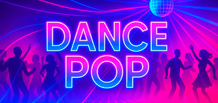 Dance Pop is a genre of popular music designed for the dance floor. It combines elements of pop and electronic dance music (EDM, house, disco, eurodance), creating light, catchy, and rhythmic tracks. Dance Pop is music that sounds equally good on the radio and in clubs.
History and Origins
1980s: The early steps of Dance Pop were linked to synth-pop and disco. Artists like Madonna, Whitney Houston, and Michael Jackson used dance rhythms in pop hits.
1990s: The genre flourished thanks to Britney Spears, Backstreet Boys, Spice Girls, and European eurodance (Ace of Base, Haddaway).
2000s – 2010s: A synthesis of pop and EDM. Artists such as Lady Gaga, Rihanna, Katy Perry, David Guetta, and Calvin Harris secured Dance Pop’s place in global charts.
Today: The genre remains do...
Dance Pop is a genre of popular music designed for the dance floor. It combines elements of pop and electronic dance music (EDM, house, disco, eurodance), creating light, catchy, and rhythmic tracks. Dance Pop is music that sounds equally good on the radio and in clubs.
History and Origins
1980s: The early steps of Dance Pop were linked to synth-pop and disco. Artists like Madonna, Whitney Houston, and Michael Jackson used dance rhythms in pop hits.
1990s: The genre flourished thanks to Britney Spears, Backstreet Boys, Spice Girls, and European eurodance (Ace of Base, Haddaway).
2000s – 2010s: A synthesis of pop and EDM. Artists such as Lady Gaga, Rihanna, Katy Perry, David Guetta, and Calvin Harris secured Dance Pop’s place in global charts.
Today: The genre remains do...
Moombahsoul — Romance and Soul in the Rhythm of Moombahton
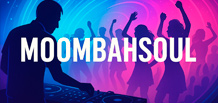 Moombahsoul is a subgenre that grew out of Moombahton, where the signature “broken” reggaeton beat (around 108 BPM) blends with the smooth, melodic sound of soul, R&B, and chillout. If Moombahton is associated with dancefloors and festivals, then Moombahsoul is its more sensual, deep, and relaxed sibling.
History and Origins
Moombahton emerged in 2009 when DJ Dave Nada accidentally slowed down the track Afrojack – Moombah to reggaeton tempo, giving birth to a new style.
Soon producers began experimenting, adding elements of soul, R&B, and Latin melodies to the energetic Moombahton.
This is how Moombahsoul was formed — a direction designed for more intimate atmospheres than explosive festival tracks.
Sound Characteristics
Tempo: around 108 BPM &mdas...
Moombahsoul is a subgenre that grew out of Moombahton, where the signature “broken” reggaeton beat (around 108 BPM) blends with the smooth, melodic sound of soul, R&B, and chillout. If Moombahton is associated with dancefloors and festivals, then Moombahsoul is its more sensual, deep, and relaxed sibling.
History and Origins
Moombahton emerged in 2009 when DJ Dave Nada accidentally slowed down the track Afrojack – Moombah to reggaeton tempo, giving birth to a new style.
Soon producers began experimenting, adding elements of soul, R&B, and Latin melodies to the energetic Moombahton.
This is how Moombahsoul was formed — a direction designed for more intimate atmospheres than explosive festival tracks.
Sound Characteristics
Tempo: around 108 BPM &mdas...
Electro Swing — retro in a modern rhythm
 Electro Swing is a music genre that combines jazz and swing from the 1920s–40s with elements of modern electronic music. It merges the energy of vintage big bands with the powerful beats of house, hip-hop, and downtempo, creating a sound that is both nostalgic and relevant for 21st-century dance floors.
History
In the early 2000s, European DJs and producers began experimenting with old jazz samples in electronic music.
The first Electro Swing albums appeared in France, the UK, and Austria.
One of the pioneers is Parov Stelar, whose tracks “Catgroove” and “Booty Swing” set the tone for the genre.
Sound Features
Samples: vintage jazz and swing recordings (trumpets, saxophone, big bands).
Electronics: house or hip-hop beats, basslines, synthesizers.
...
Electro Swing is a music genre that combines jazz and swing from the 1920s–40s with elements of modern electronic music. It merges the energy of vintage big bands with the powerful beats of house, hip-hop, and downtempo, creating a sound that is both nostalgic and relevant for 21st-century dance floors.
History
In the early 2000s, European DJs and producers began experimenting with old jazz samples in electronic music.
The first Electro Swing albums appeared in France, the UK, and Austria.
One of the pioneers is Parov Stelar, whose tracks “Catgroove” and “Booty Swing” set the tone for the genre.
Sound Features
Samples: vintage jazz and swing recordings (trumpets, saxophone, big bands).
Electronics: house or hip-hop beats, basslines, synthesizers.
...
Electro-punk — punk energy meets electronic chaos
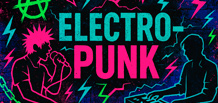 Electro-punk — is a musical genre that combines the aggression of punk rock with the electronic sound of synthesizers, drum machines, and samplers. This style merges the rebellious aesthetics of punk with the power of the electronic scene, creating music full of chaos, drive, and an anarchic spirit.
History and Origins
The first roots of the style appeared in the late 1970s — early 1980s, when punk bands began experimenting with synthesizers.
Suicide (New York) are considered one of the founders of electro-punk: their music blended minimalist electronic rhythms with punk expression.
In Europe, the genre actively developed in the underground, where punk ideology intertwined with industrial and EBM (Electronic Body Music).
Sound Characteristics
Energetic beats: fast, of...
Electro-punk — is a musical genre that combines the aggression of punk rock with the electronic sound of synthesizers, drum machines, and samplers. This style merges the rebellious aesthetics of punk with the power of the electronic scene, creating music full of chaos, drive, and an anarchic spirit.
History and Origins
The first roots of the style appeared in the late 1970s — early 1980s, when punk bands began experimenting with synthesizers.
Suicide (New York) are considered one of the founders of electro-punk: their music blended minimalist electronic rhythms with punk expression.
In Europe, the genre actively developed in the underground, where punk ideology intertwined with industrial and EBM (Electronic Body Music).
Sound Characteristics
Energetic beats: fast, of...
Afro House — African rhythms and the energy of the club scene
 Afro House — is a subgenre of house music that combines deep electronic rhythms with African ethnic elements. Its sound is built on traditional drums, tribal vocals, and a modern house beat, creating an atmosphere suited both for dancefloors and spiritual immersion.
History and Origins
The roots of Afro House go back to South Africa, where in the 2000s local rhythms began to merge with house music.
The genre grew out of Kwaito and Deep House, absorbing African rhythms and vocal traditions.
In Europe and the US, Afro House became popular thanks to DJs and producers seeking new forms of sound and a more “organic” atmosphere within house music.
Sound Characteristics
Drums and percussion: djembe, congas, bongos, ethnic percussion.
Vocals: often performed in Africa...
Afro House — is a subgenre of house music that combines deep electronic rhythms with African ethnic elements. Its sound is built on traditional drums, tribal vocals, and a modern house beat, creating an atmosphere suited both for dancefloors and spiritual immersion.
History and Origins
The roots of Afro House go back to South Africa, where in the 2000s local rhythms began to merge with house music.
The genre grew out of Kwaito and Deep House, absorbing African rhythms and vocal traditions.
In Europe and the US, Afro House became popular thanks to DJs and producers seeking new forms of sound and a more “organic” atmosphere within house music.
Sound Characteristics
Drums and percussion: djembe, congas, bongos, ethnic percussion.
Vocals: often performed in Africa...

